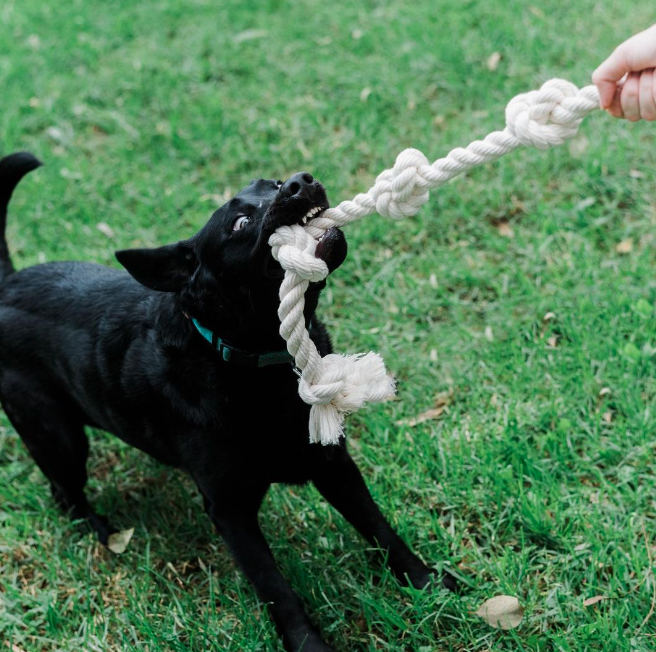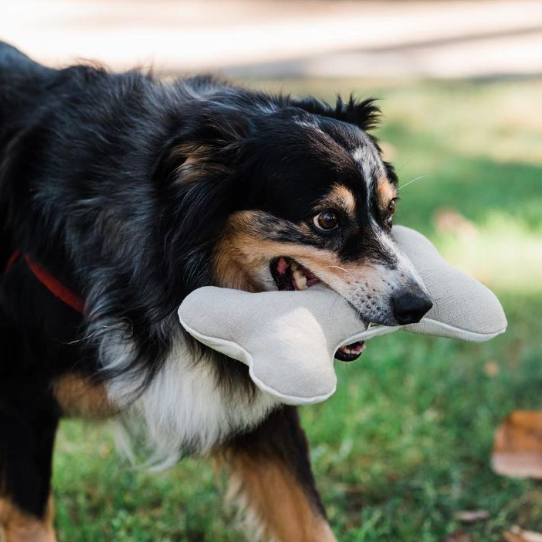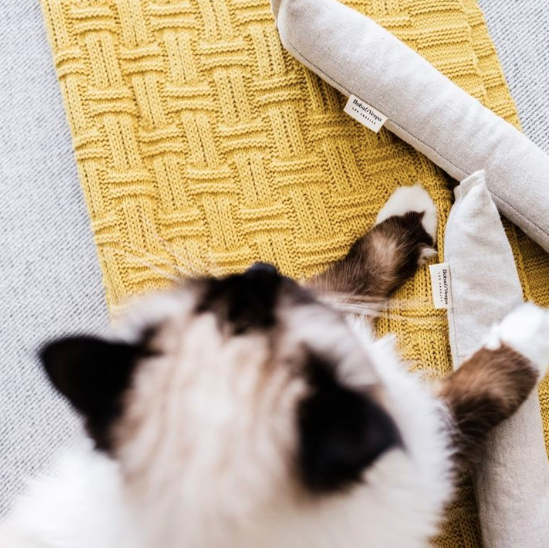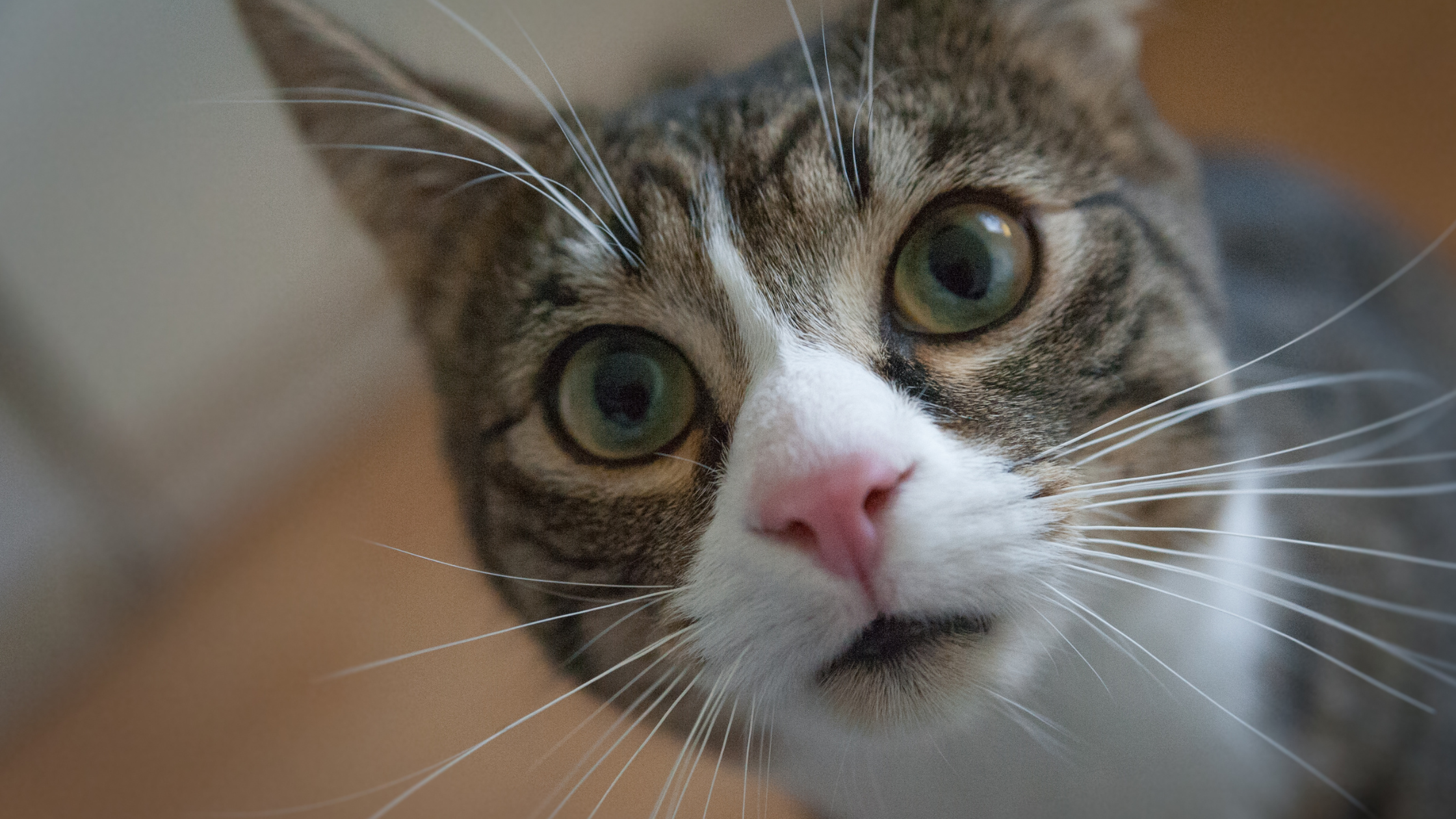As much as we love our beloved pets, we cannot deny our pet's environmental impact. From toys to pet food to single-use plastic waste bags, our pet's carbon footprint cannot be ignored. As responsible pet owners, we have a duty to care for our cats and dogs in a way that reduces their impact on the planet as much as possible.
Sound like an impossible task? Don't worry; we're here to help you. As pet parents, we understand how difficult and overwhelming it can be to look after our furry friends in a way that honors the environment. After learning more about the disastrous effects of pet waste, food, treats, toys, bedding and accessories on climate change, we’re committed to helping you reduce your and your pet’s carbon footprint without sacrificing quality.
As hard as it may be to acknowledge the destructive effects of pet ownership, we cannot deny that our pets are part of the climate problem. Read on to learn more about how our favorite sustainable pet essentials can help you minimize the carbon pawprint of our canine companions and feline friends.
What is a Carbon Footprint?
First of all, it's important to understand what a carbon footprint is. We define it as the total amount of greenhouse gases generated by our actions. This means that our pet's carbon pawprint is determined by the total amount of greenhouse gases that are caused by their actions, mainly their diet. Your pet's carbon footprint will depend on various factors, including their size. For example, an average size dog is responsible for 770kg of CO2e per year, while a pet cat creates an average of 310kg of CO2e per year.
The Truth About the Environmental Paw Print of Dogs and Cats
Ready for some scary statistics? The pet food industry and its industrial meat production is the biggest cause of global deforestation. In addition, feeding dogs and cats creates the equivalent of around 64 million tons of carbon dioxide in the US each year which has roughly the same impact as 13.6 million cars on the road. If our pets formed a separate country, they would rank 5th in global meat consumption. Not to mention, an estimated 634 million dog toys end up in US landfills per year, equivalent to 40,500 tons of waste.
How to Minimize Your Pet's Carbon Footprint
When it comes to looking after dogs and cats, there are certain changes you can make to reduce their impact on the planet.
Adopt a Pet
Adopting a cat or dog from your local pet shelter rather than shopping with a breeder helps tackle the problem of overpopulation and reduces the impact of pet food production and the costs associated with caring for and housing pets in animal shelters.
Cut out Waste
Before you buy toys, bowls, litter, poop bags, and leashes, consider their durability, supply chains, and whether they can be recycled. In addition, you should re-think whether it's necessary to dress up your furry friend for outings and various holidays. And if you do find it necessary, try making a cute costume yourself or buy second-hand.
Consider your Pet's Diet
As we mentioned earlier, the pet food industry has the biggest environmental impact. You can protect the planet by providing your dog or cat with a homemade diet made with local whole foods. Choosing to make your own cat food or dog food, rather than supporting pet food companies that don't consider sustainable pet food ingredient sourcing, can reduce plastic waste while simultaneously ensuring your pets eat a healthier, whole food-based diet.
Supporting alternative proteins is another good option. Treats made with crickets are really gaining in popularity because crickets don't produce any methane and use 2000 times less water than cattle. Just as humans do, consider rotating veggie only meals or treats on certain days of the week - maybe Meat free Monday? Please aways speak with your veterinarian before making changes to your pup's diet.
Consider a protein source that helps to fight overpopulation, as is the case with silver carp. These dog treats and cat treats are made with this delicious white fish not only helps local fishermen, but helps to fight biodiversity.
Pet Products to Reduce Climate Impact
We made it our mission to source the most sustainable pet products available from the most socially responsible brands, so you don't have to worry about all the research. Here are some of our favorite eco-friendly pet supplies.
Toys
Hemp and Cotton Kicker
These cat kicker toys are made with an exterior of naturally pesticide free hemp fabric and stuffed with organic cotton, catnip and crinkly sounding buckwheat. Absolutely zero plastic. They're purrrfect for playtime.
Organic Cotton Dog Rope Toy
This cotton rope toy for dogs is one of the best alternative sources for playtime. 100% compostable, your dog will love playing tug of war, tossing, fetching, or flossing all day.
Check out our guide to the Organic Dog Toys as well as Natural Safe Dog Chews.
And you can view our collection of sustainable dog toys here.
Waste
Poop Bags
Dog poop is usually picked up and discarded with single-use plastic bags that are harmful to the environment. Look for brands that are home compostable and made in the USA.
These Compostable Dog Poop Bags are our favorite. They are made in the USA and are certified compostable. Double win!
Another idea is to save plastic bags from sandwich bread and other products, rinse them out and repurpose them to clean up after your pup. This is what we do at The Kind Pet.
Cat Litter
For cat litter look for plant based, biodegradable options and steer clear of clay based litters. We love this natural hemp cat litter because it totally absorbs all odors and it's made in the USA.
Check out our Guide on the Most Sustainable Cat Litter.
Accessories
Don't forget about your cat's bed or your dog's leash, collar and harness. What are they made from? Usually it's nylon and that's no good. If you get a nylon product second hand, great! Second hand is always the best option. But if you need to buy new, please consider more eco-friendly materials. Check out our guide about how to choose the most sustainable pet accessories here.
Start your Journey Towards Pet Sustainability Today
To help protect the environment and reduce the carbon emissions of cats and dogs, get started with these sustainable pet products today.









